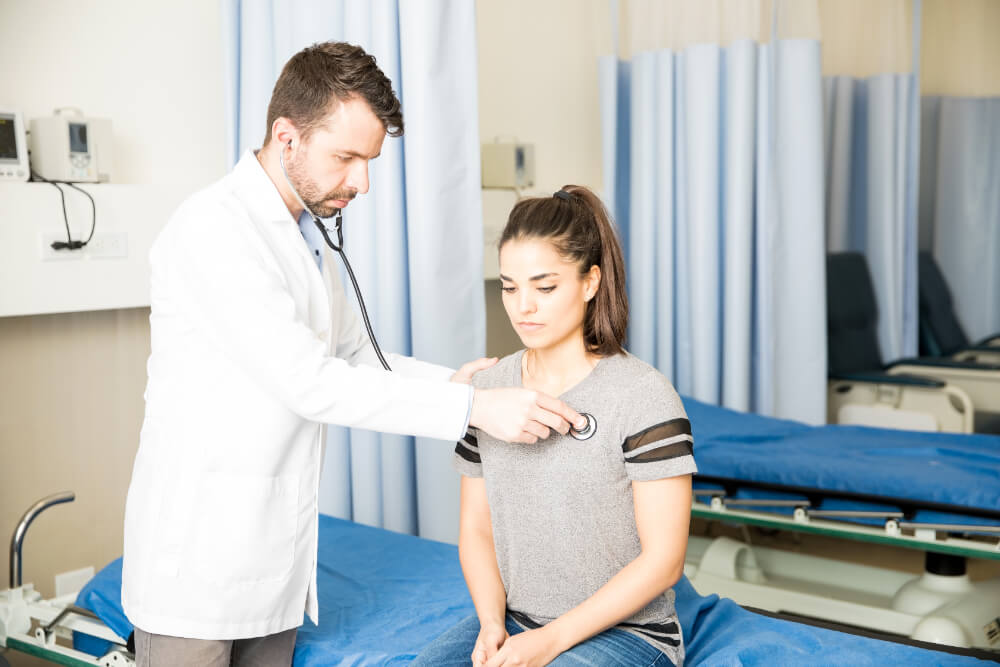The Importance of Regular Physical Examinations
A physical examination is a comprehensive assessment of a person’s overall health. It involves a series of tests and observations conducted by a healthcare provider to identify any potential health issues. Regular physical examinations are essential for maintaining good health and detecting diseases early, when they are most treatable.
The Purpose of Physical Examinations
Physical examinations serve several important purposes:
Early Detection of Diseases
- Identifying Risk Factors: By assessing a patient’s medical history, lifestyle, and family history, healthcare providers can identify individuals at risk for certain diseases.
- Screening for Diseases: Routine screenings, such as blood tests, cholesterol checks, and cancer screenings, can detect diseases in their early stages.
- Monitoring Chronic Conditions: Regular check-ups help monitor the progression of chronic conditions like diabetes, heart disease, and high blood pressure.
Promoting Preventive Health
- Lifestyle Counseling: Healthcare providers can offer advice on healthy lifestyle habits, such as diet, exercise, and stress management.
- Immunizations: Physical examinations provide an opportunity to ensure that patients are up-to-date on vaccinations.
- Mental Health Screening: Assessing mental health can help identify and address potential issues early on.
Building a Strong Doctor-Patient Relationship
Trust and Communication: Regular check-ups foster trust and open communication between the patient and healthcare provider.
Personalized Care: A strong doctor-patient relationship allows for personalized care and treatment plans.
Importance of Physical Examination

Regular physical examinations are essential for maintaining good health and preventing serious illnesses. By scheduling annual or biannual check-ups, individuals can:
- Detect Early Signs of Disease: Early detection can lead to timely intervention and improved outcomes.
- Optimize Overall Health: Regular check-ups help identify and address potential health risks.
- Promote Healthy Lifestyle Habits: Healthcare providers can offer personalized advice on diet, exercise, and other lifestyle factors.
- Build a Strong Doctor-Patient Relationship: Regular check-ups foster trust and open communication with your healthcare provider.
Components of a Physical Examination
Discover the systematic approach to a thorough physical examination, including key techniques and assessments.
Inspection Inspection involves careful observation of:
- Skin color, lesions, or deformities.
- Body symmetry and posture.
- Visible movements or abnormalities (e.g., tremors).
Palpation Using hands to feel the body, palpation assesses:
- Temperature differences.
- Swelling or tenderness.
- Size and consistency of organs or masses.
Percussion By tapping on body surfaces, percussion evaluates:
- Fluid accumulation (e.g., pleural effusion).
- Organ size and borders (e.g., liver span).
- Air-filled versus solid areas (e.g., lungs).
Auscultation Auscultation focuses on listening to:
- Heart sounds (murmurs, arrhythmias).
- Breath sounds (wheezes, crackles).
- Bowel sounds (peristalsis or absence).
Vital Signs Assessment Vital signs include:
- Temperature.
- Blood pressure.
- Heart rate.
- Respiratory rate.
Detailed Examination of Body Systems
A step-by-step guide to examining major body systems for comprehensive patient assessment.
Cardiovascular System
- Inspection: Observe for cyanosis, jugular venous distension.
- Palpation: Assess pulses, thrills, or heaves.
- Auscultation: Identify murmurs, gallops, or rubs.
Respiratory System
- Inspection: Look for chest deformities or asymmetry.
- Percussion: Differentiate between air-filled and consolidated areas.
- Auscultation: Detects abnormal lung sounds like wheezes or crackles.
Abdominal Examination
- Inspection: Observe for scars, distension, or hernias.
- Palpation: Check for tenderness, organomegaly, or masses.
- Auscultation: Listen for bowel sounds and vascular bruits.
Neurological Examination
Key components include:
- Cranial nerve evaluation.
- Motor strength and reflex testing.
- Sensory assessments for pain, temperature, and proprioception.
The Role of Technology in Physical Examination
Technological tools, such as handheld ultrasounds and digital stethoscopes, enhance diagnostic accuracy. However, they are best used as adjuncts to traditional examination skills.
Conclusion
Regular physical examinations are a vital component of preventive healthcare. By prioritizing your health and scheduling regular check-ups, you can take proactive steps to maintain optimal well-being. Remember, early detection is key to effective treatment and a healthier future.
Schedule an appointment with our General medicine physician for comprehensive physical examination (469) 200-5974 Or visit us https://scclittleelm.com/

